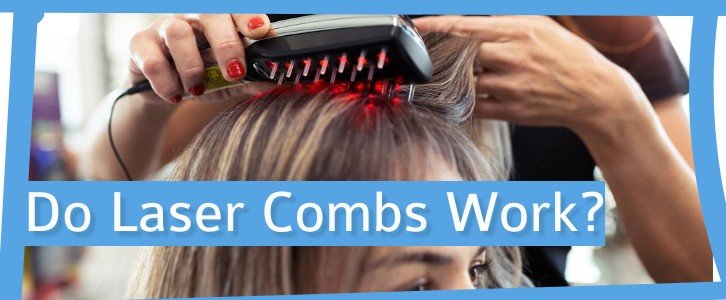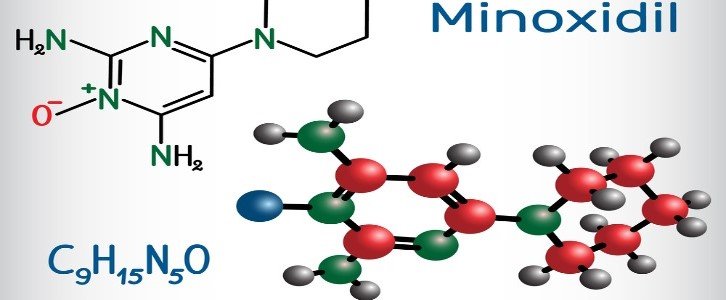When Does Rogaine Hair Shedding Stop? How long is the Minoxidil Shed Phase?
Rogaine (or Minoxidil–which is the generic name of the drug) is the most popular hair loss treatment worldwide as of now, and quite an effective one.
Still, one of the most common side effects that people may experience when they first start treatment drug is shedding.
If you experience shedding, it might be very concerning, and you’ll probably have many questions: what is this shedding phase about? How long does it last? Will you keep shedding for years? Will it stop at some point?
We’ll tell you what you need to know about the “shed phase” when using Minoxidil. Let’s get into it.
What is Minoxidil?
At first, Minoxidil used to be a drug prescribed to patients who suffered from high blood pressure (hypertension) as it is a vasodilator. People reported of hair growth as a side effect, and a few years later – in 1988 – the drug was approved to be used as a hair loss treatment.
The best-known brand of Minoxidil is Rogaine. But there are multiple brands. The usual dose prescribed for men is 5% solution, while it is 2% for women. An even more experimental treatment at 10% exists for those who respond poorly to the 2% or 5%, but it is uncertain whether it has adverse effects on the body, but it seems to stimulate more hair growth.
Rogaine is mostly prescribed for androgenic alopecia, although in many countries it can be bought without a prescription.
How does Minoxidil work?
There are multiple theories that try to explain how Minoxidil works for hair growth, but none of them have been proven.
Minoxidil improves blood flow in the scalp when applied. The blood flow provides more oxygen to the hair follicles, and in some way makes hair grow faster. It also seems to make weak follicles be able to grow and hold hair that it wouldn’t be able to do without minoxidil.
Some patients start seeing positive results after a few months – usually between three and six. However, it is often recommended to wait a whole year to judge whether the treatment is effective or not.
How to use Minoxidil
Minoxidil comes in two presentations, liquid and foam. As these are topical solutions, they must be directly applied to your scalp after you’ve washed and dried it. Use your fingers to gently rub the solution over the whole affected area of your scalp.
Each patient is a different case. Some apply once a day, while others apply it twice.
Shedding and Other Potential Side Effects of Minoxidil
As with numerous other treatments, this drug also may come with a wide range of side effects, such as itching, irritation, and redness. This medicine sometimes can be very aggressive towards people with sensitive skin, as some patients have reported suffering from peeling. However, it is crucial to note that these effects are only seen in the areas that Minoxidil has been applied.
Shedding is also a side effect that seems to last for a few months.
This “shed phase” is normal, even though it seems a bit counterproductive as the treatment’s main purpose is to prevent hair loss and not to cause it.
In order to explain why the shed phase occurs, I’ll I have to explain the hair growth cycle and its three stages: anagen, catagen, and telogen.
First, the hair goes through an “active growth” phase, known as anagen, where the hair grows for a long period of time. Eventually, the hair reaches the catagen phase and stops growing and stays in this phase for a few weeks, and then in the telogen phase, the hair falls out – which leaves room for a new hair to grow in the hair follicle.
People with androgenic alopecia may have disproportionate follicle numbers in the different phases.
Whenever you begin using Minoxidil as a treatment for hair loss, many follicles in the telogen phase will be forced to start growing again in the anagen phase. Before it enters a new anagen phase, the hairs in the telogen phase must shed. They must fall out to leave room for new hair to grow in the follicle. This effect is completely normal, and you should no be panicking about it.
We humans normally shed around 100 hairs every day without any hair treatment, because our hair goes through the hair growth cycle. Every day, a number of hairs change their phase from anagen to catagen to telogen, and this process continues until hair miniaturization.
How Long is the Minoxidil Shedding Phase? When Does Rogaine Shedding Stop?
Most people – if not all – will probably experience some hair shedding when committing to minoxidil, and the shedding phase will begin after two to eight weeks.
The shedding will probably temporarily increase as a side effect of Minoxidil and then eventually decrease if you continue using the product. However, if more than eight weeks have passed and you still experience shedding with uninterrupted minoxidil use, you may want to consult with a professional.
Always keep in your mind that using Minoxidil as a treatment for hair loss is indefinite if you want to maintain your results.
If you stop using Minoxidil because of the side effect of shedding, it may turn out to be counterproductive as you might even experience more aggressive shedding by losing all your hair gains. This treatment needs consistency to be effective, and if you stop you might experience further hair loss.
If for whatever reason, you cannot picture yourself using Minoxidil for the rest of your life, you may want to consider other hair loss treatments or consult with a professional about other potential treatments that might be better for you.





